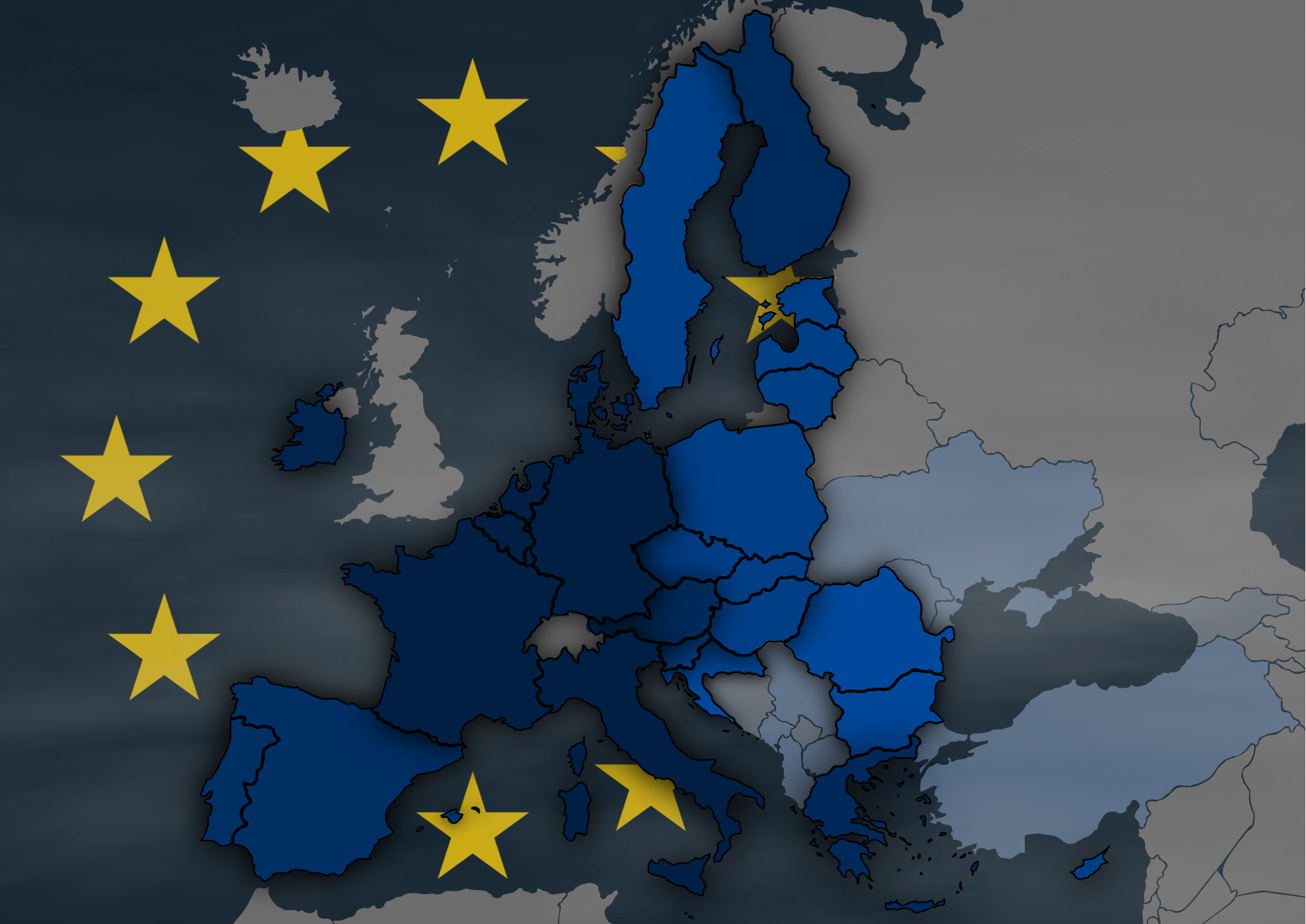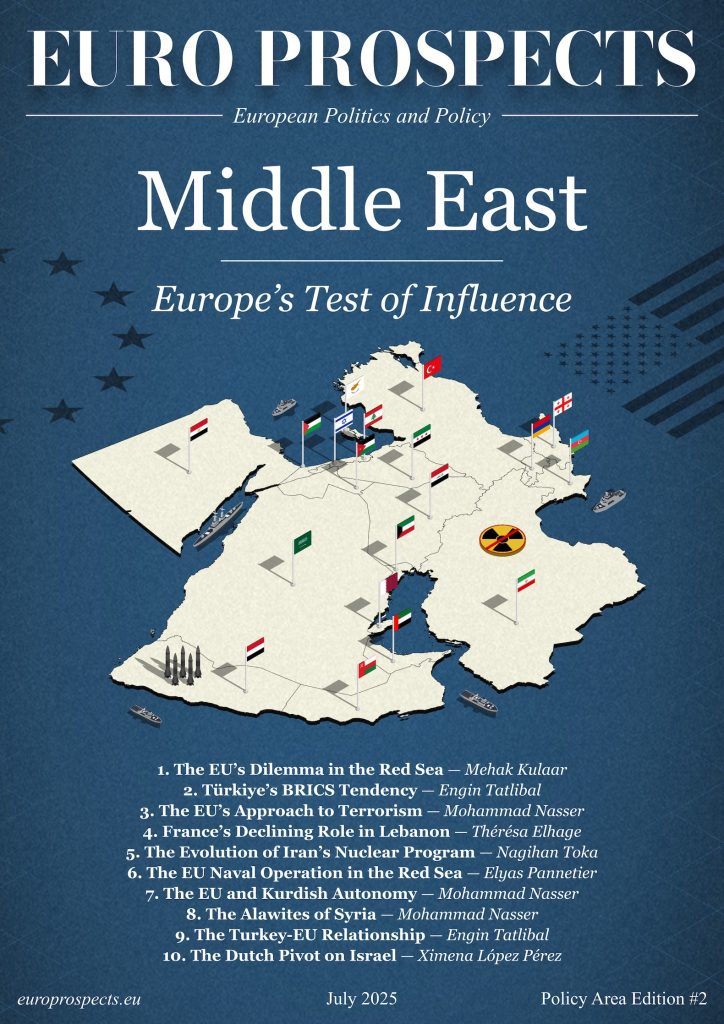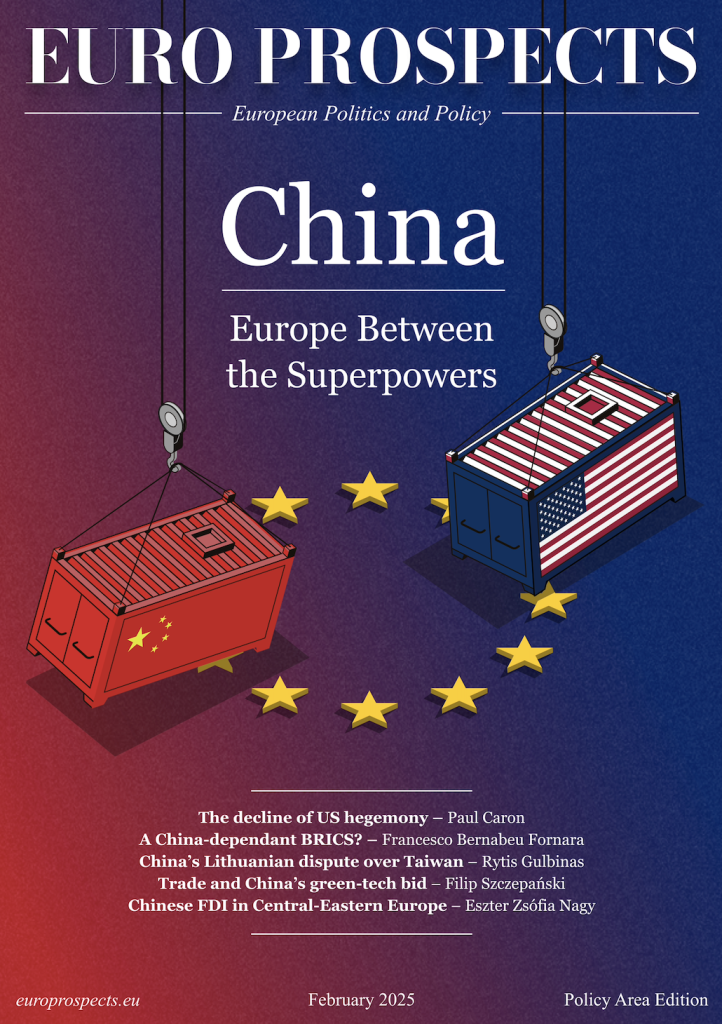8 min read — Analysis | The EU at a Crossroads (series)
Deepening vs Widening: The EU at a Crossroads (Part 2)

By Nathaniel Thomas Carrier
First published: 2020 | Electronically published: March 5, 2023 at 9:20
It is not uncommon for the debate of deepening vs. widening to be associated with the already existing theories of European integration; intergovernmentalism and neofunctionalism. However, what do these theories offer in terms of the content of the debate? Theorists such as Ernst Haas argued that modernisation is the unifying factor to the debate, pushing neofunctionalism as “a theory of societal modernization which largely relied on economic, political and social actors as primary agents for change”. Modernisation of societies and political thought has bound humanity for centuries, but as time has shown, our conceptualisation of modernisation is skewed by the archaic nature of the international arena. The EU, through trial and error, has worked to unify the continent for the continuation of peace and prosperity. Unification, though, while broad a term, is procured in different ways. In the following, this chapter will analyse the two aforementioned theories of integration and their relationship with EU politics.
Crisis After Enlargement
In 2004, the EU produced its fifth enlargement. As is known, this enlargement was the largest enlargement scheme to-date that welcomed a plethora of cultures and languages. Decided through a simple popular vote, ten countries ascended into the European fold, effectively furthering the European continent’s unification. Moreover, it produced a widening of the Union’s influence in international politics and ensured the continued development of former Eastern bloc and Yugoslav states. It is this unifying measure that is today, arguably, the EU’s biggest challenge. For it is not only the historical and geopolitical disparity between Eastern and Western Europe that hinders the economic and democratic growth of the EU, but it is also the very act of enlargement that, for better or worse, has potentially furthered this divide. European citizens and politicians are also divided on the issue of enlargement. One can condition this divide on the lack of a European identity, but it does not satisfy the essential question: how does the EU overcome this divide? To begin to answer this, one must analyse the role of deepening and the role of widening, for each entails a polysemy of furthered European integration. In fact, the EU has already defined the terms: “The notion of deepening refers to this ever closer union and is seen in the increased integration of the EU. Its clearest manifestation has been the EU’s transition towards economic and monetary union (EMU) and the introduction of the single currency, the euro”, while, “Proponents of widening consider that the EU should expand in terms of membership but that this membership should be looser than that desired by the deepening school. The EU has also managed to widen itself, enlarging from 15 countries in 2004 to 28 in 2013”.
The 2004 EU enlargement was an attempt to further unify t he European continent. By including Poland, Hungary, Czechia, Estonia, Lithuania, Latvia, Slovakia, Slovenia, Malta, and Cyprus, the EU effectively used the proponents of neofunctionalism to further its goal of an ever-closer Union. However, it was not only the act of including these states into the European fold that was the unifying factor, but it was also the act of pushing the new EU Member States to conform to EU monetary and trade policy, a product of both deepening and widening. Could the enlargement have come too fast and too soon? Despite the fact that soon after the enlargement the world entered a recession in 2008, it is important to emphasize that the term ‘crisis’ is sociological; a difference of opinions between the Member States’ populations. “European legislation, driven by the view that common rules must govern the internal market, has aggravated the problem of different economic development levels inside the EU”, effectively challenging the act of unification through enlargement. Most notably, while most Western EU states were reluctant, but also willing, to bring about the 2004 enlargement, public opinion remained negative. After the enlargement, France changed its constitution in 2005, making it “…compulsory to hold a referendum on further EU enlargements…”. Mostly due to the growth of public opposition to enlargement, the constitutional change seems to have had a spillover effect, with ‘enlargement fatigue’ being coined the new term to explain the opposition in other EU Member States to further expansion.
Intergovernmentalism, treating states as the sole actors to integration, can be seen as a byproduct of enlargement fatigue; pitting both deepening and widening as devices to be avoided. While both devices should be avoided in this case, the act of widening is seen as more favorable compared to deepening, with some EU Member States calling to decentralise the Union in order for enlargement to be implemented. However, as much as general integration remains favourable among the elite, significant progress is hindered for the following reasons, according to Charles Wyplosz: first, “more integration involves deeper sovereignty transfers”. State sovereignty is important to each Member State, however, upon accession to the EU, states are obligated to transfer most of their sovereignty to the EU institutions. If the Union is to prosper and act as one body, centralization of this sort cannot be avoided. “Second, [EU] citizens are more aware now of the trade-offs of further integration. The failed attempt at adopting a Constitution has revealed the end of the “pioneer period” when European integration was automatically seen as an end by itself”. Third, the inefficiency of handling the sovereign debt crisis and the euro crisis has impacted the general populace, meaning, events such as these will linger for extended periods of time, successfully impeding European integration. Lastly, with the increase of negativity to further integration now rising among political leaders, citizen consent of sovereignty transfer is lacklustre.
The Overlapping Theories
The first subsection of this chapter has shown the relationship of European integration theories with EU politics, but it has also exposed the overlapping nature of them. Further, it has concluded that deepening and widening, while different in nature, cannot materialise as separate devices. Charles Wyplosz’s stance on the inevitability of deeper integration or widening always rests with the notion that sovereignty transfer must occur; as such is the nature of EU ascension. In order for the devices to ensue separately, one would have to change the entire EU institutional structure altogether. To avoid such hypotheticals, this section will focus on the overlapping nature of deepening and widening and their relationship to the democractic deficit and legitimation crisis of the European integration project.
Andreas Follesdal and Simon Hix offer insight into the democractic deficit of the EU through five points, of which the first two of them will be analysed and discussed: first, as with the definition of democracy, there is no single definition of a democratic deficit. To generalize, a democratic deficit occurs when the transparency of democratic institutions is insufficient. However, the scarcity of legitimacy in EU institutions does not rest with democracy, itself. It instead is associated with European integration — for, “European integration has meant an increase in executive power and a decrease in national parliamentary control”. By extension, the European Parliament, however, is limited in its legislative abilities. For, the process of legislative drafting, revision, and ratification is as complex as, one could say, the human eye. This complexity does not produce transparency, but rather nourishes its demise. The demise takes the shape of a parliamentary legitimation crisis; a theory discussed by Christopher Lord and Paul Magnette. The parliamentary legitimation crisis of the EU is a deficit in which dual legitimation in the EU parliament must occur. For, “‘Dual’ legitimation may be the only way of achieving popular sovereignty in a political system that has both a people…” “…and a series of peoples…”. Lord and Magnette further suggest that this dual parliamentary system, at least for the scholars in favor of a constitutionalised Union, effectuate this legitimacy by creating an upper chamber of the Parliament consisting of the Council of Ministers. An act such as this would certainly be seen as a deepening of the Union, thus, the correlation between deepening and widening with the lack of legitimacy occurs. Certainly, amending the Parliament and its structure furthers the legitimacy crisis, but this lack of legitimacy already exists because of the need to amend the system.
Second, the act of sovereignty transfer through EU ascension, according to Giandomenico Majone in Follesdal and Hix, is merely an act of transferring regulatory control to the EU. The purpose of which in respect to “…the single market, the harmonization of product standards and health and safety rules and even the making of monetary policy by the European Central Bank…” is done to measuredly “…isolate these policies from domestic majoritarian government”.21 If EU legitimacy is to exist, Member State sovereignty, therefore, must be limited. However, doing so undermines the nature of a nation-state, of which the EU gathers its legitimacy. It is from this that we can understand that the deepening and widening of the Union is an act of providing the EU with legitimacy, but it is this process that also ensues a deficit of democracy.
R. Daniel Kelemen, Anand Menon and Jonathan Slapin in Wider and deeper? Enlargement and integration in the European Union, share a unidimensional spatial model in which shows a potential depth of integration:
For simplicity, assume a status quo level of integration located at 0, with all members preferring deeper co-operation to some degree, XC > XB > XA > 0. Under unanimity decision-making (used in the EU for treaty change and some sensitive legislative issues), member states are able to deepen up to the point 2XA , the point that makes the most laggard state indifferent between the new level of co-operation and the status quo. Under a majority decision-making rule, the member states could agree to co-operate up to the level 2XB , the point that makes the majority pivot indifferent between the status quo and the new level of co-operation.
This model, even in its most simplistic form, illustrates that the widening of the Union does not, in turn, prevent deepening. Indeed, the prevention of deepening would only occur when the new, potential member of the Union does not prefer furthered cooperation over an existing Member State. It can be said from here, that the deeper integration of existing and potential, new members only furthers the notion that deepening and widening exist on the same plane. However, the cost of deeper integration can, in fact, inhibit the europeanisation of the Union, which is, ultimately, the goal of the Union. The divide between actors who prefer deepening and those who prefer widening, henceforth, cannot rest solely on the notion that one can exist without the other. With this we must remember that the deepening vs. widening debate is a potential reason for the divide we see today, which is the sole hypothesis of this dissertation: what is the cause for the gap between functional institutional reform and EU legitimacy? For even to begin answering the first question posed in this chapter, how does the EU overcome this divide?, it is important to identify the overlying problem and to ensure that its complexity is thoroughly analysed. As will be discussed in chapter two, the deepening vs. widening debate contains a clear correlation with the Core-periphery debate, often associated with each other by way of the theory of integration through differentiation; suggesting that the widening of the Union has driven differentiation in the EU. Continue reading part 3 here.. (coming soon).
Write and publish your own article on Euro Prospects
Subscribe to our newsletter – stay informed when we publish articles on pressing European affairs.

